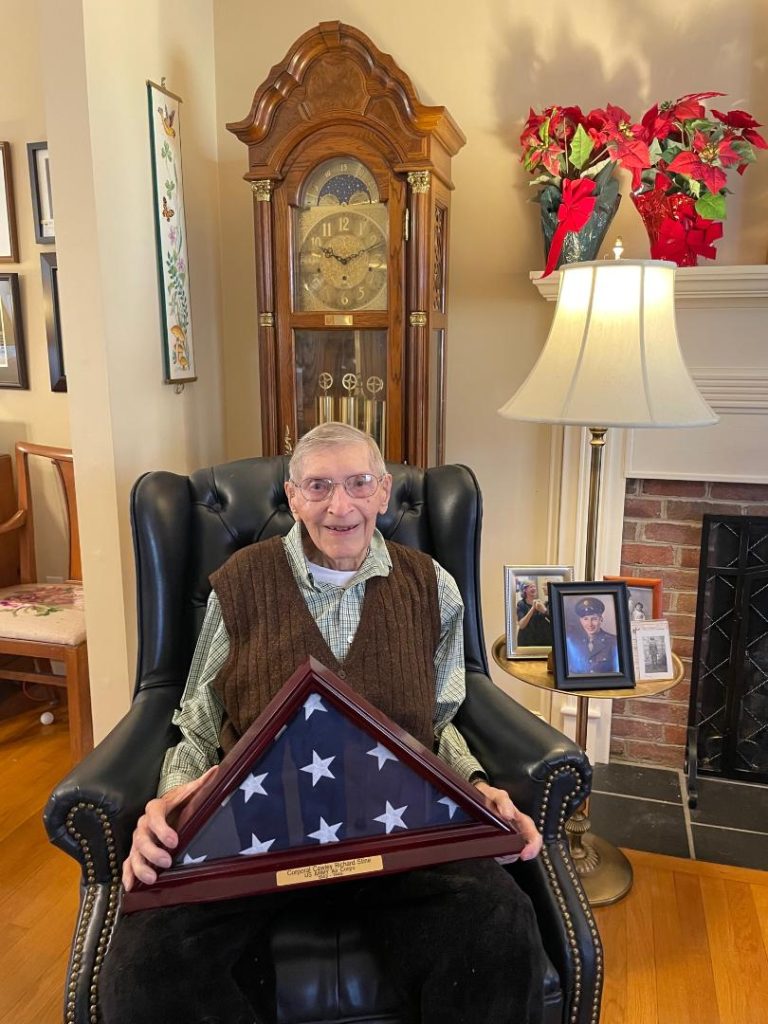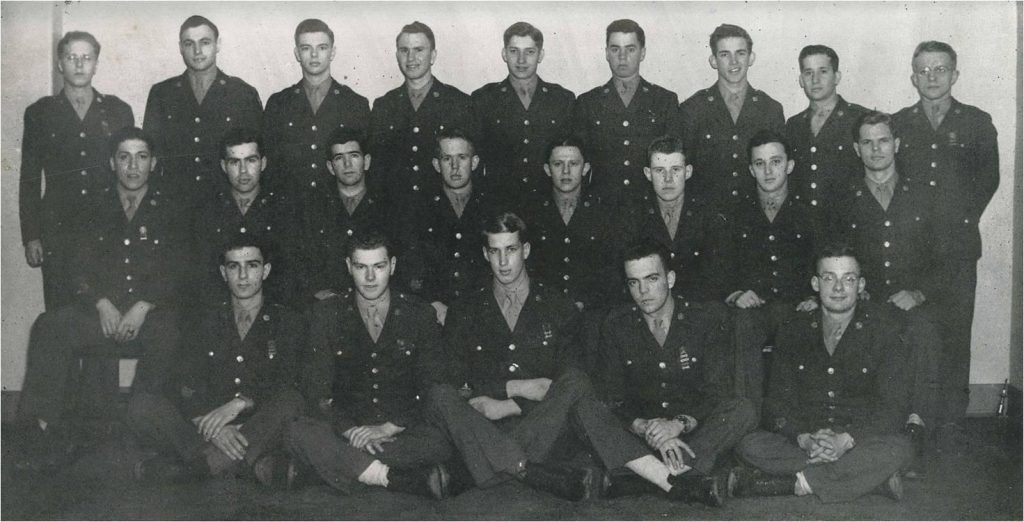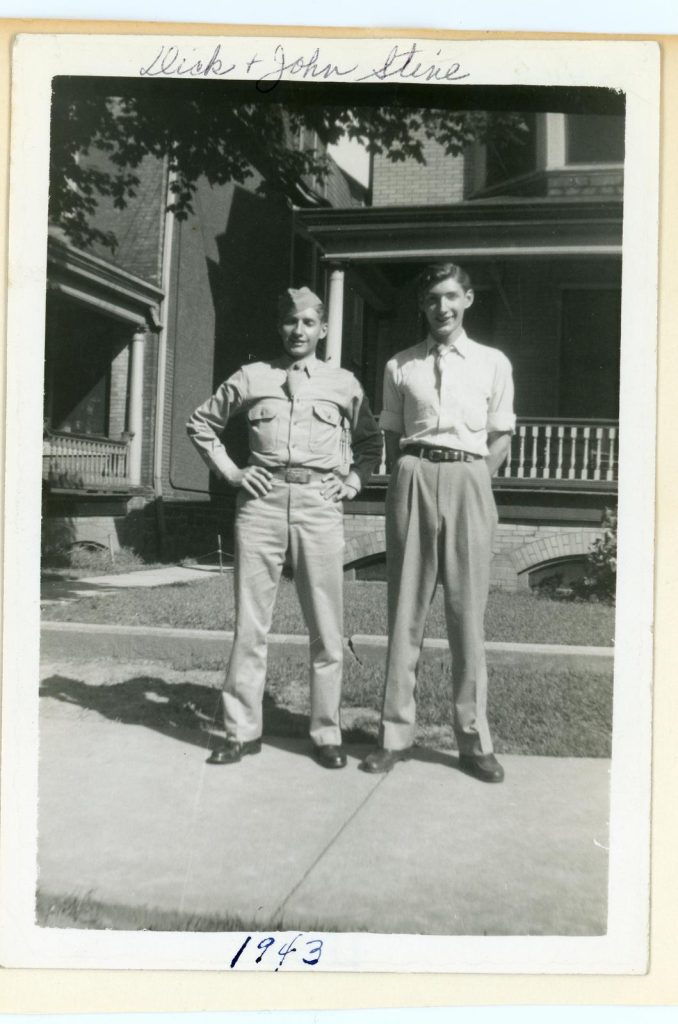A Martinsville area World War II veteran will celebrate his centennial birthday on Tuesday, December 12.
Like many other American men, Cpl. Cawley Richard “Dick” Stine’s military career began following December 7, 1941, with the bombing of Pearl Harbor.
At the time, Stine was attending Lebanon Valley College in Anville, Pennsylvania, where he was studying Chemistry.
Unlike other soldiers who fought the war with tanks, ships, and guns, Stine’s weapon was a weather balloon.
Wendy Embree, Stine’s daughter, said her father went to the local armory to find programs that would allow him to stay in school while in the service.
“They were pushing the pre-meteorology program because they really needed weather people. Apparently, because the war had just stepped up, they needed some weather people, so they were kind of pushing this program. The way I understand it is that was the one they needed the most, so that’s what he got into,” she said.
Embree said her father liked to tell that story because it was such a tense time.
“He knew his draft notice was coming up, and if he was drafted, he probably wouldn’t have a choice of what he was going to do and might have to fight and shoot people and things like that,” she said.
Embree said Stine got into the program at the last minute. When he received the telegram stating he was accepted, Stine went to the armory where there were lines of men signing up for the military.
“Because of his telegram that said he had been accepted into this program, he could skip the line and go to the front of the line, and do everything he had to do because they were in such a hurry for them to get on the train that night,” she said. “He didn’t have to wait in any lines, he just skipped all the lines and signed up very quickly and got on that train and left.”
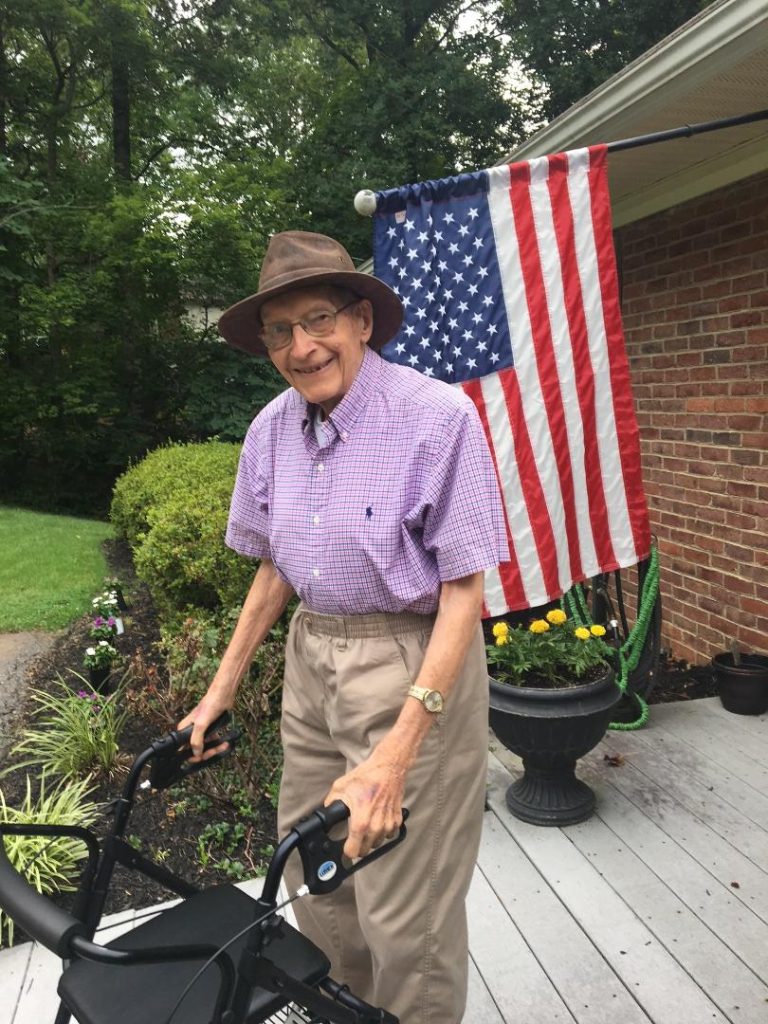
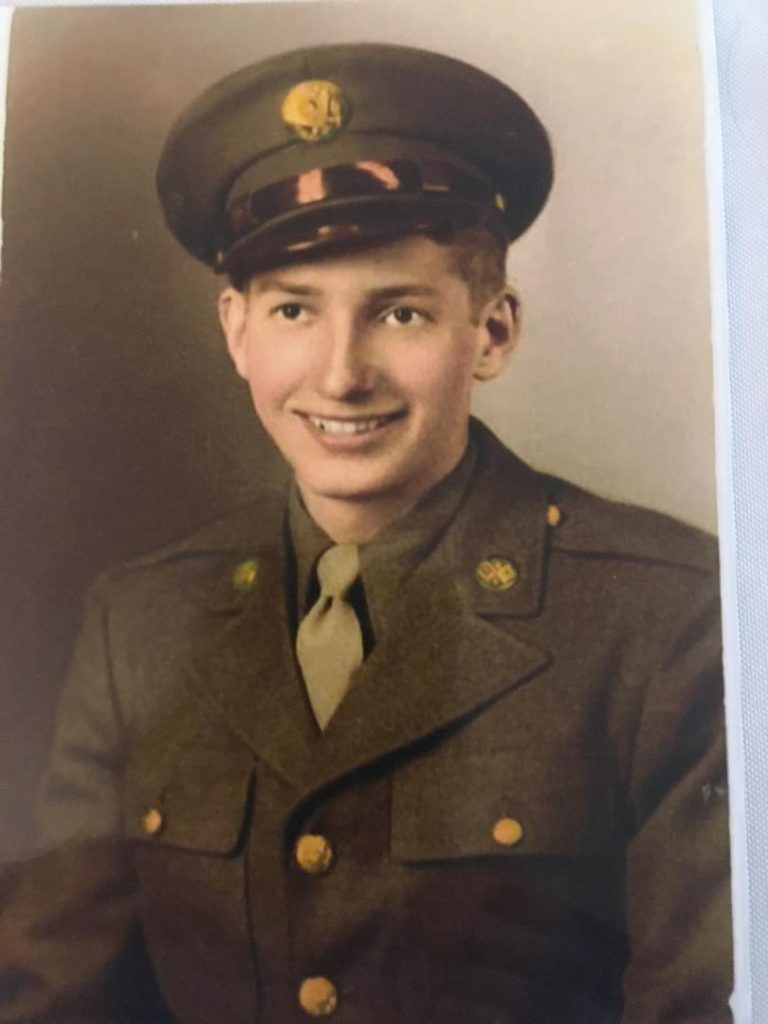
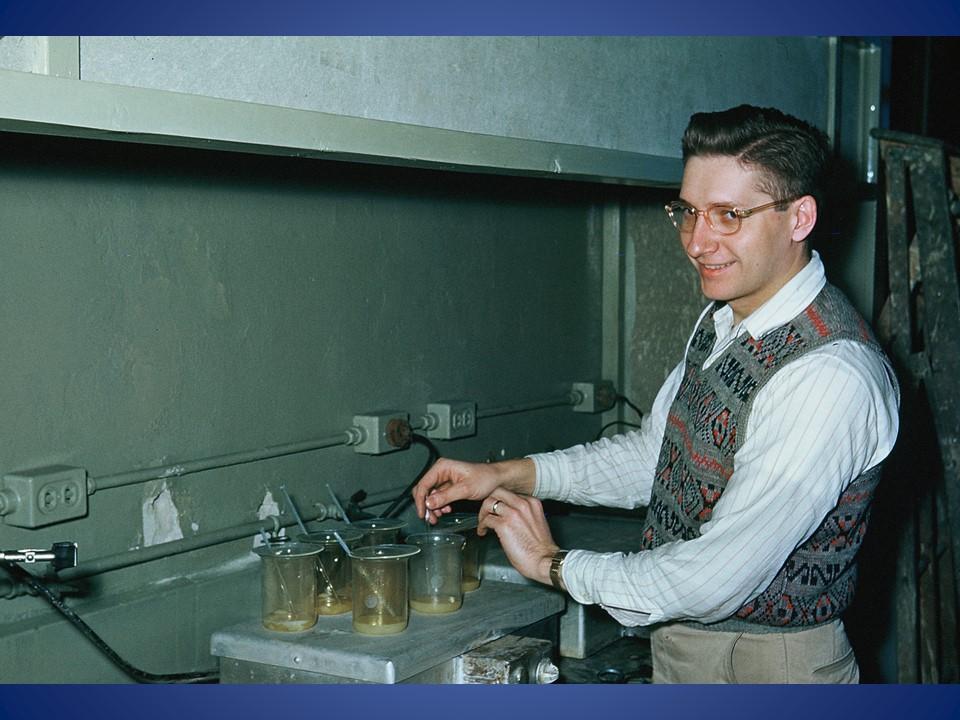
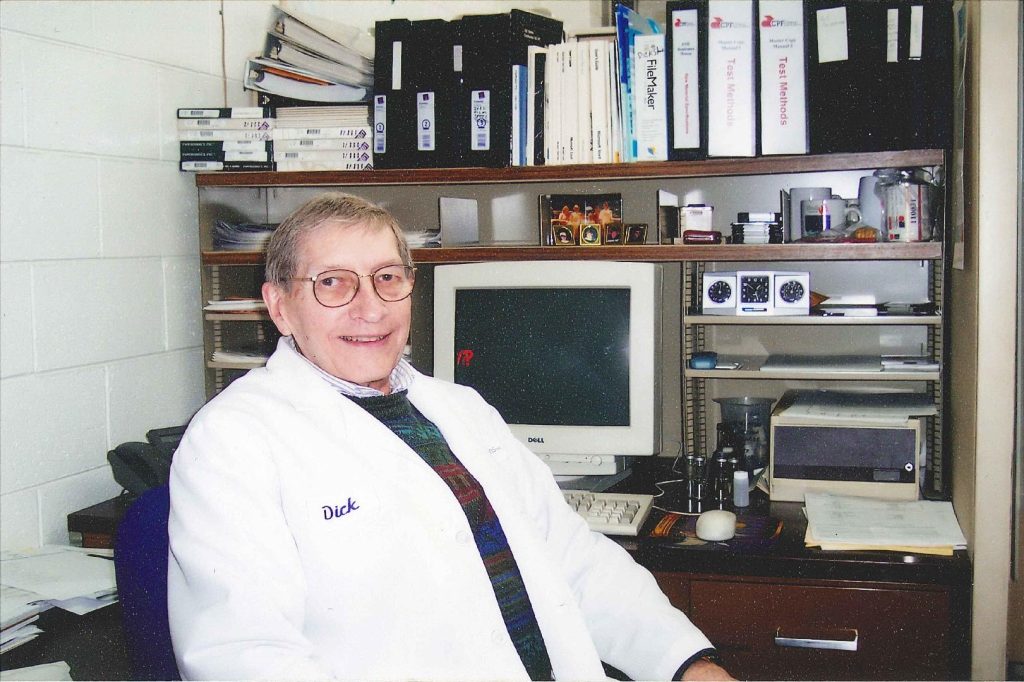
Stine completed the program at Hamilton College in Clinton, New York.
Stine said he enjoyed studying meteorology, especially the math and science involved in it.
“It was very good. I enjoyed it,” he said.
“It was complicated because it was an accelerated program, and they had to have classes eight hours a day and then study halls at night. So, it was like all day and all night you were learning,” Embree said.
After completing the program, Stine was preparing to go to China to predict the weather for the invasion of Japan.
“They were preparing for the invasion of Japan. So, they were going to go to China to predict the weather so that they could pick the right day to bomb,” Embree said.
The class before Stine’s went to China, and his didn’t have to go, she said.
“They were standing ready to go, but then the war ended, I mean they dropped the bomb, and they didn’t have to invade Japan,” she said.
Stine also was in one of the first groups to change from using manual equipment to observe the changes in weather to using electronic equipment.
Embree said the manual part involved sending up balloons and then using a telescope to observe what the balloons were doing.
“Then they started putting the electronic instrument on the balloon, and then the electronic instrument would do the work for you instead of you having to do the telescope. What he used to say was it made it a lot easier,” she said, chuckling.
Following the war and his discharge on February 2, 1946, Stine worked as a civilian for the Army and went around the county helping to set up weather stations.
“Those weather stations were just fun, and I enjoyed it. I got real good at being in that situation, and I just enjoyed being in it,” Stine said.
While doing this, Stine was in several interesting places, including the South Caicos Islands, Sarasota, Florida, and New York City.
“They were in interesting places. The one he likes to talk about is when he went to South Caicos, which is now a big resort with condominiums, but back then it was just a town,” Embree said. “It was a very fun experience. He got to enjoy some nice resort areas because it seemed like the weather stations were in places like that.”
Embree added that Stine also used this experience to see different parts of the county.
Stine went back to college to continue his education by using the G.I. Bill. He received his Ph.D. in chemistry from Syracuse University.
Stine eventually moved to Martinsville, where he worked as a research chemist for Dupont.
“I enjoyed it all this time, the chemistry. I did pretty good with it, doing the chemical things that needed to be done,” he said.
Following 25 years with the company, he retired in 1986.
“Then he went back to work for another 20 years. So, he didn’t really retire until he was 85 years old,” Embree said.

